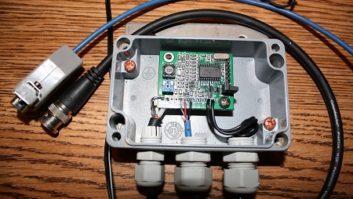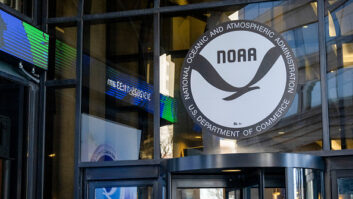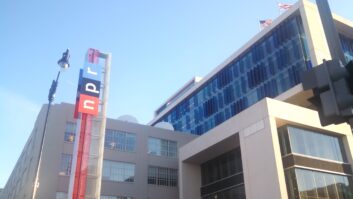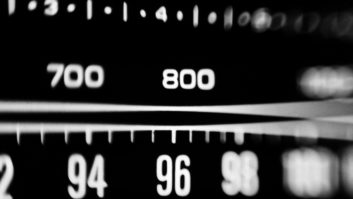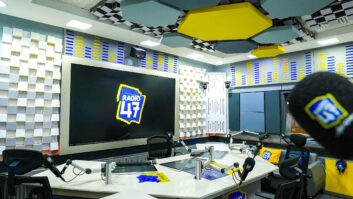
Fig. 1: A closeup of the LED strip, with built-in dropping resistor. LED lighting is really hitting its stride. Look at the assortment of flashlights now available. Most of us can remember when portable lighting meant an Eveready flashlight with two D cells to light the way.
Sunbury Broadcasting’s Chief Engineer Harry Bingaman was doing a project that required some under-counter lighting. Harry made a trip to the local electrical distributor to see what was available. Companies now make LED strip lighting that runs on 12 VDC, and can be purchased in different lengths. You even have a choice of bright white or warm white. Interconnecting cable harnesses and Y-adapters to do the branching of the strips are available, too.
It was exactly what Harry was looking for, until he totaled the price. Yikes. Time for a Plan B!
On the Internet, Harry found CitiPower. See citipower.co, and once there, click on CitiPower LED Product. Or do an eBay search under LED strip lighting.
You’ll find more choices that you can imagine. These strips can be ordered as waterproof or non-waterproof, depending on your application. They run on 12 VDC and have a 3M self-adhesive strip on the back of them for easy mounting to any surface. They can be cut every three LEDs, and every cut-point has a copper donut pad to solder your power connections as seen in Fig. 1. They come in almost every conceivable color.

Fig. 2: The LED light strip in action. Boy, these are bright. Harry ordered a roll of waterproof and non-waterproof in bright white. The rolls contain 300 LEDs and the length is 5 meters. The cost was $7.90, and they worked great, providing tons of light. See an example in Fig. 2. Harry had to drop the voltage, because when fully powered, the light washed out the camera!
One thing Harry discovered is that the non-waterproof version is easier to cut and solder to the pads. The waterproof series has a clear silicone coating and needs to be peeled away to make your connections, but this is not a horrible task.
Harry also used the LED strips to light some areas in the transmitter rooms that were a little cramped for any type of incandescent or fluorescent lighting. Depending on the number of LEDs in your application, the strip can be driven by a wall-wart power supply.
In fact, your imagination is the limit when using this type of lighting. I visited the website and agree with Harry. Take a look at their new product, the LED net light, which is coming. Imagine fishing net made of LEDs — ideal for a studio ceiling!
* * *
Graham Brock Inc. consultant Stu Graham has just the ticket for ensuring a good RF connection. Pictured in Fig. 3 is a tube of silver conductive grease, manufactured by MG Chemicals (www.mgchemicals.com). You can buy this grease in hypodermic tubes, as pictured.

Fig. 3: Silver conductive grease, a great RF lubricant.

Fig. 4:Improve bullet conductivity using MG Chemicals’ silver grease.
This silver grease provides both antistatic conductivity and maximum thermal conductivity between sliding surfaces, while providing protection from moisture and corrosion. Typical applications include lubrication of rotary coils in AM phasors and tuning units. The grease can also be applied to the moving slider assemblies in older FM transmitter tuning and loading controls, or applied to RF bullets, as seen in Fig. 4.
The grease is available from Allied and Mouser, and runs about $20 per syringe. It’s not cheap, but preventive maintenance using this grease is cheap insurance.
Contribute to Workbench. You’ll help your fellow engineers, and qualify for SBE recertification credit. Send Workbench tips to [email protected].Fax to (603) 472-4944.
Author John Bisset has spent 43 years in the broadcasting industry and is still learning. He is SBE certified and is a past recipient of the SBE’s Educator of the Year Award.
